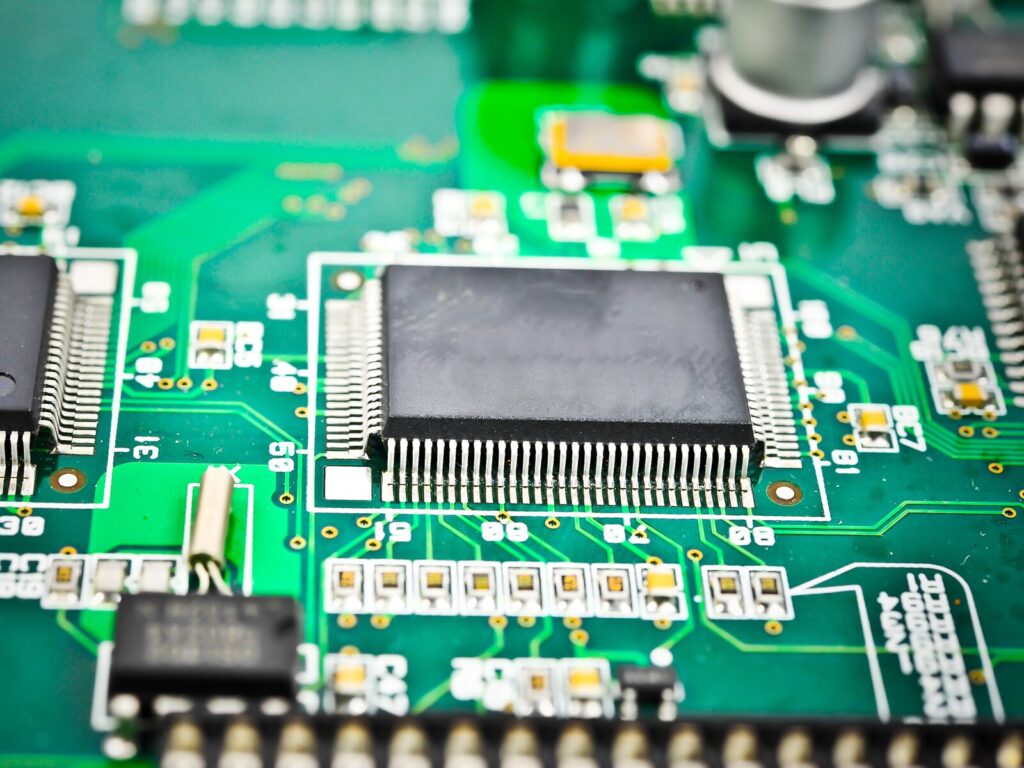The Applied Technical Services (ATS) Family of Companies provides radiation-hardened electronics testing to determine whether devices are suitable for service in radioactive space environments.
Radiation Hardened Devices
Though most semiconductor electronic components are sensitive to damage from radiation, aerospace manufacturers produce radiation-hardened (RAD-hard) components and circuits to resist these effects. Specialized providers test space-bound electronic materials by comparing them to their non-hardened counterparts. Manufacturers pursue this testing to design and produce variants with reduced susceptibility to radiation damage.
Producing a rad-hard device design requires extensive testing and development. Rad-hard products typically test to a plethora of resultant-effects tests, such as total ionizing dose (TID) effect, damage dose displacement (DDD) effect, singular event effect (SEE), and enhanced low dose rate sensitivity (ELDRS).
Types of Radiation Effects on Electronic Components
TID: Exposure to high-energy particles causes TID effects, which vary depending on an array of factors. The structure, function, and type of materials used in an electronic, as well as the type of radiation and the rate of interaction, can each affect the component’s resistance to TID effects. TID can appear as parametric degradation, leading to functional failure.
DDD: DDD effects occur when an electronic faces exposure to particle fluences: either ionization and lattice displacement or displacement damage. These effects can vary depending on an array of parameters, including the electronic’s constituent materials, operating frequency operating voltage, and shielding (both intrinsic and extrinsic), as well as the type, dose, and flux of the radiation to which it is exposed.
SEE: Heavy protons or ions sometimes pass through semiconductor material, depositing energy and potentially causing SEEs. These effects can be destructive or non-destructive. Destructive SEEs undermine aerospace applications, potentially rendering systems inoperable.
ELDRS: ELDRS effects cause degradation in electronics. These effects occur in an irradiation field with a low dose rate, causing more damage to components than in an irradiation field with a high dose rate.
How Radiation Hardened Electronics Testing Work
Radiation-hardened electronics testing is a process that loads materials with radiation to determine how long they can withstand its effects and continue operating in their intended service environments. These test results help experts find the most optimal materials for specific rad-hard electronics.
Our Radiation Hardened Electronics Testing Services
Our Family of Companies provides convenient and affordable testing for any aerospace clients looking to simulate radiation effects on electronic devices headed for orbit. We staff world-renowned scientists and engineers, offering turn-key test solutions from RFP assistance to final data delivery. Our experts design all fixtures, software, and hardware used for radiation-hardened electronics testing.
Our Radiation Testing Lab
Our state-of-the-art lab allows us to evaluate electronic devices for aerospace applications, determining the extent to which ionizing radiation will degrade their functionality. We offer both in-house and onsite testing.
Lab Capabilities
- EIA/JESD57
- ESCC 22900
- ESCC 25100
- ASTM F 1192
- MIL-STD 750 and 883:
- TM 1080
- TM 1023
- TM 1021
- TM 1020
- TM 1019
- TM 1017
Radiation Hardened Electronics Testing Standards and Protocols
Radiation testing standards are put in place to ensure organizations meet certain requirements, including safety, reliability, common measurement standards, and logistical system alignment. We adhere to strict DLA (Defense Logistics Agency) quality and compliance standards for radiation testing on electronic devices.
Contact Us
Our Family of Companies possesses a broad scope of services to meet all your radiation-hardened electronics testing needs. Contact the experts at ATS for your next aerospace project launch.



